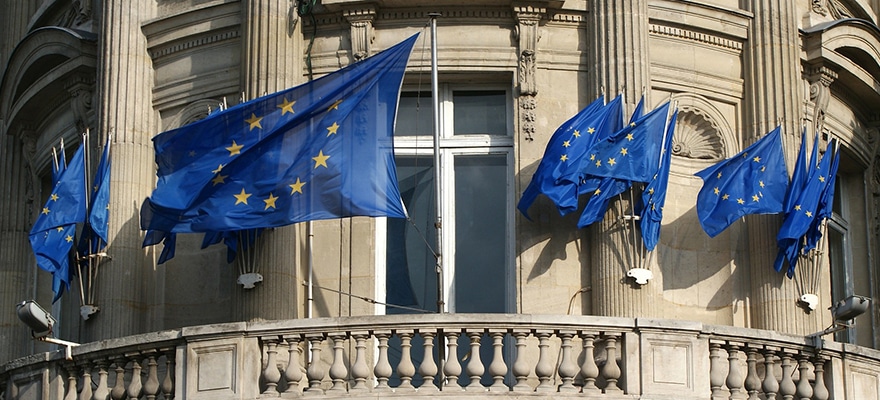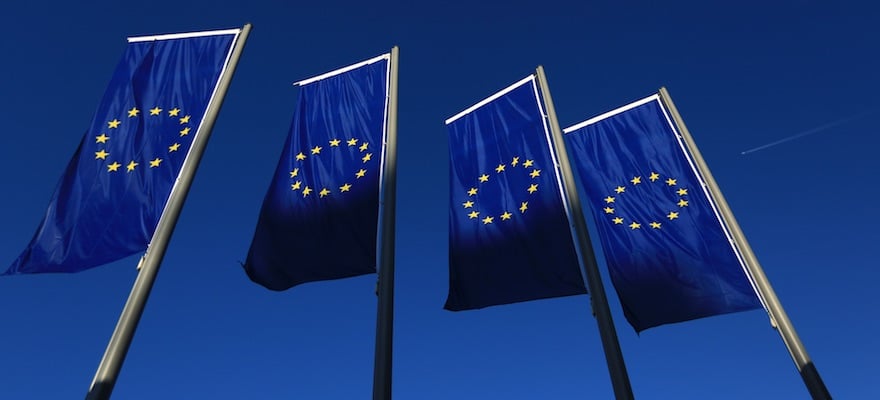As more and more Marketing
Marketing
Marketing is defined as the business process of identifying, anticipating and satisfying customers' needs and wants.This is a crucial element of any operation or brokerage in the financial services space. Well-funded marketing campaigns are instrumental to the survival and longevity of these companies in an increasingly competitive industry.Within the forex space, marketers perform a wide range of functions to help procure, secure, or retain clients.In particular, newer forex brokers also have t
Marketing is defined as the business process of identifying, anticipating and satisfying customers' needs and wants.This is a crucial element of any operation or brokerage in the financial services space. Well-funded marketing campaigns are instrumental to the survival and longevity of these companies in an increasingly competitive industry.Within the forex space, marketers perform a wide range of functions to help procure, secure, or retain clients.In particular, newer forex brokers also have t
Read this Term content is produced by the world’s organizations it is becoming increasingly difficult to capture and hold anyone’s attention. Today, over 1,400 new blog posts are uploaded every minute. Technology has turned us all into publishers, journalists, musicians and film makers.
To unlock the Asian market, register now to the iFX EXPO in Hong Kong.
Ironically, the same democratization of the media has made it virtually impossible for most of us to gain an audience for our creative outpourings and marketing messages.
Marketing reach
The popularity of games can make them the ideal media to carry your marketing messages where case studies, blogs, white papers and video content have failed to hit the mark. Games offer enormous reach. In the first half of 2016 a staggering 400 million PlayStation 2, Nintendo DS and Xbox 360 game consoles were sold worldwide. Forget socially awkward teenage boys locked in their bedrooms playing fantasy, action and driving games. Nowadays half of all gamers are women and most are thirtysomethings.
Gaming the system
Unlike interruption marketing and advertising, people actively choose to participate in gameplay. Games that are compelling, challenging and fun will hold your target audience’s attention far longer than a print advertisement, TV or radio commercial.
The average time spent in an advergame (a game that contains branded content or has been specifically created to promote an organization, product or service) is 7 to 30 minutes. 4 out of 5 smartphone users regularly play games on their mobiles, and half of these people play every day. 1 in 3 advergame players share their contact details with the brand during or after playing a title they like.
In contrast, traditional and online advertising has lost much of its effectiveness. In a bid to keep the gravy train moving, the length of TV commercial breaks that punctuate the most popular shows has increased over the last five years while the shows themselves have been trimmed to compensate. So we get less Big Bang Theory for our buck (sorry, couldn’t resist).
Affordable game development
The cost of game development has fallen steadily over the years. The price of a very basic VR (virtual reality) game with limited functionality and simple graphics starts from around USD 5,000, for example. Game developers typically charge by the hour or a day rate.
In Western Europe you might expect to pay anywhere from $50 to $200 per hour. In the US and Canada, you’ll probably pay more. Of course, before you get started on development you’ve got to be certain that a game is the right marketing approach for your target audience.
Next, you need to be clear and realistic about the game’s marketing objectives and what it can deliver. Don’t let the prospect of building a cool video or VR game distract you from its intended purpose. If you don’t think it can realistically deliver a marketing return, then kill the project and move on.
Player loyalty
The psychology of games means that the more positive our experiences during play the stronger our associations with the activity and desire to repeat it. Every time we play a game that surprises, delights and challenges us our brains produce a chemical neurotransmitter called dopamine. In a game scenario, dopamine motivates us to take actions and prepares us for coming events. Anticipation and motivation keep gamers coming back for more.
Total recall
Burger King and Microsoft teamed up to develop a series of games for Xbox and Xbox 360 during the Christmas holiday season of 2006. The games sold for just $3.99 with value meals at selected Burger King outlets. They sold 3.2 million games in just 8 weeks.
The campaign resulted in a 40% profit increase (YOY), a 4% increase in same store sales and won the Grand Prix Titanium Lion at Cannes, 2007. Research from the University of Colorado shows the impact of games and simulations on adults’ ability to retain and recall information. Subjects of the study displayed an 11% higher rate for factual knowledge recall and a 9% increase in the retention rate of information.
Context is king
However, UK research found very poor levels of engagement with consumers when exposed to brand sponsorship within major game titles. You cannot simply plaster your brand logo all over games like the F1 series developed by Codemasters, and hope to see a return on your investment.
Similar to product placement in movies and TV shows, it only works when the branded item is integral to the storyline. Without context, brand logos and product placements become meaningless wallpaper that the player or audience simply ignores.
VR and AR games
Games offer brands and marketing departments a huge amount of choice from simple scratch cards and low tech board games to massive multiplayer digital environments, virtual and augmented realities. Statistics by AR company Blippar claim that augmented reality is 2 ½ times more effective at holding a prospect’s attention than radio or TV advertising but they don’t have figures for sales or brand recall.
Nonetheless, it is clear that money is pouring into the development of VR and AR technologies. Digi-Capital estimates that the combined VR/AR market will be worth USD 150 billion by 2020.
Marketing success and failure
Banks and other financial institutions have had some early successes using games and social platforms such as Facebook to engage and educate customers about everything from loans to mortgages. Similarly, many of the world’s big banks are now using trading games like Stockfuse as part of their recruitment and selection processes.
These trading game simulations test an applicant’s ability to assess risk and their knowledge of Compliance
Compliance
In finance, banking, investing, and insurance compliance refers to following the rules or orders set down by the government regulatory authority, either as providing a service or processing a transaction. Compliance concerning finance would also be a state of being following established guidelines or specifications. This designation can also encompass efforts to ensure that organizations are abiding by both industry regulations and government legislation. Understanding ComplianceCompliance is a
In finance, banking, investing, and insurance compliance refers to following the rules or orders set down by the government regulatory authority, either as providing a service or processing a transaction. Compliance concerning finance would also be a state of being following established guidelines or specifications. This designation can also encompass efforts to ensure that organizations are abiding by both industry regulations and government legislation. Understanding ComplianceCompliance is a
Read this Term rules and guidelines. Virtual reality offers another dimension to simulations or 'serious games'. Everyone from retailers, fast food restaurant chains, furniture manufacturers and holiday companies to healthcare providers have pounced on the new technologies for marketing purposes, although the results have been somewhat mixed.
IKEA’s virtual reality kitchen experience, for example, seems to have received a fair amount of criticism for the weakness of its offering. On the other hand, in Vienna, Austria, an augmented reality bus shelter proved the perfect platform to promote the latest series of the zombie hit TV show, The Walking Dead.
AR technology was used to superimpose flesh-eating zombies onto a real-time feed of the physical background around a bus shelter, creating some scary moments for the unsuspecting commuters.
No doubt some marketing departments and creative agencies will find the allure of new technologies impossible to resist, and probably get burned as a consequence. But whatever the technology, it must be the right medium for the target audience to successfully deliver a memorable brand experience. Flashy gimmicks alone just won’t do.
This article was written by Charlie Trumpess, a communications and marketing specialist.
As more and more Marketing
Marketing
Marketing is defined as the business process of identifying, anticipating and satisfying customers' needs and wants.This is a crucial element of any operation or brokerage in the financial services space. Well-funded marketing campaigns are instrumental to the survival and longevity of these companies in an increasingly competitive industry.Within the forex space, marketers perform a wide range of functions to help procure, secure, or retain clients.In particular, newer forex brokers also have t
Marketing is defined as the business process of identifying, anticipating and satisfying customers' needs and wants.This is a crucial element of any operation or brokerage in the financial services space. Well-funded marketing campaigns are instrumental to the survival and longevity of these companies in an increasingly competitive industry.Within the forex space, marketers perform a wide range of functions to help procure, secure, or retain clients.In particular, newer forex brokers also have t
Read this Term content is produced by the world’s organizations it is becoming increasingly difficult to capture and hold anyone’s attention. Today, over 1,400 new blog posts are uploaded every minute. Technology has turned us all into publishers, journalists, musicians and film makers.
To unlock the Asian market, register now to the iFX EXPO in Hong Kong.
Ironically, the same democratization of the media has made it virtually impossible for most of us to gain an audience for our creative outpourings and marketing messages.
Marketing reach
The popularity of games can make them the ideal media to carry your marketing messages where case studies, blogs, white papers and video content have failed to hit the mark. Games offer enormous reach. In the first half of 2016 a staggering 400 million PlayStation 2, Nintendo DS and Xbox 360 game consoles were sold worldwide. Forget socially awkward teenage boys locked in their bedrooms playing fantasy, action and driving games. Nowadays half of all gamers are women and most are thirtysomethings.
Gaming the system
Unlike interruption marketing and advertising, people actively choose to participate in gameplay. Games that are compelling, challenging and fun will hold your target audience’s attention far longer than a print advertisement, TV or radio commercial.
The average time spent in an advergame (a game that contains branded content or has been specifically created to promote an organization, product or service) is 7 to 30 minutes. 4 out of 5 smartphone users regularly play games on their mobiles, and half of these people play every day. 1 in 3 advergame players share their contact details with the brand during or after playing a title they like.
In contrast, traditional and online advertising has lost much of its effectiveness. In a bid to keep the gravy train moving, the length of TV commercial breaks that punctuate the most popular shows has increased over the last five years while the shows themselves have been trimmed to compensate. So we get less Big Bang Theory for our buck (sorry, couldn’t resist).
Affordable game development
The cost of game development has fallen steadily over the years. The price of a very basic VR (virtual reality) game with limited functionality and simple graphics starts from around USD 5,000, for example. Game developers typically charge by the hour or a day rate.
In Western Europe you might expect to pay anywhere from $50 to $200 per hour. In the US and Canada, you’ll probably pay more. Of course, before you get started on development you’ve got to be certain that a game is the right marketing approach for your target audience.
Next, you need to be clear and realistic about the game’s marketing objectives and what it can deliver. Don’t let the prospect of building a cool video or VR game distract you from its intended purpose. If you don’t think it can realistically deliver a marketing return, then kill the project and move on.
Player loyalty
The psychology of games means that the more positive our experiences during play the stronger our associations with the activity and desire to repeat it. Every time we play a game that surprises, delights and challenges us our brains produce a chemical neurotransmitter called dopamine. In a game scenario, dopamine motivates us to take actions and prepares us for coming events. Anticipation and motivation keep gamers coming back for more.
Total recall
Burger King and Microsoft teamed up to develop a series of games for Xbox and Xbox 360 during the Christmas holiday season of 2006. The games sold for just $3.99 with value meals at selected Burger King outlets. They sold 3.2 million games in just 8 weeks.
The campaign resulted in a 40% profit increase (YOY), a 4% increase in same store sales and won the Grand Prix Titanium Lion at Cannes, 2007. Research from the University of Colorado shows the impact of games and simulations on adults’ ability to retain and recall information. Subjects of the study displayed an 11% higher rate for factual knowledge recall and a 9% increase in the retention rate of information.
Context is king
However, UK research found very poor levels of engagement with consumers when exposed to brand sponsorship within major game titles. You cannot simply plaster your brand logo all over games like the F1 series developed by Codemasters, and hope to see a return on your investment.
Similar to product placement in movies and TV shows, it only works when the branded item is integral to the storyline. Without context, brand logos and product placements become meaningless wallpaper that the player or audience simply ignores.
VR and AR games
Games offer brands and marketing departments a huge amount of choice from simple scratch cards and low tech board games to massive multiplayer digital environments, virtual and augmented realities. Statistics by AR company Blippar claim that augmented reality is 2 ½ times more effective at holding a prospect’s attention than radio or TV advertising but they don’t have figures for sales or brand recall.
Nonetheless, it is clear that money is pouring into the development of VR and AR technologies. Digi-Capital estimates that the combined VR/AR market will be worth USD 150 billion by 2020.
Marketing success and failure
Banks and other financial institutions have had some early successes using games and social platforms such as Facebook to engage and educate customers about everything from loans to mortgages. Similarly, many of the world’s big banks are now using trading games like Stockfuse as part of their recruitment and selection processes.
These trading game simulations test an applicant’s ability to assess risk and their knowledge of Compliance
Compliance
In finance, banking, investing, and insurance compliance refers to following the rules or orders set down by the government regulatory authority, either as providing a service or processing a transaction. Compliance concerning finance would also be a state of being following established guidelines or specifications. This designation can also encompass efforts to ensure that organizations are abiding by both industry regulations and government legislation. Understanding ComplianceCompliance is a
In finance, banking, investing, and insurance compliance refers to following the rules or orders set down by the government regulatory authority, either as providing a service or processing a transaction. Compliance concerning finance would also be a state of being following established guidelines or specifications. This designation can also encompass efforts to ensure that organizations are abiding by both industry regulations and government legislation. Understanding ComplianceCompliance is a
Read this Term rules and guidelines. Virtual reality offers another dimension to simulations or 'serious games'. Everyone from retailers, fast food restaurant chains, furniture manufacturers and holiday companies to healthcare providers have pounced on the new technologies for marketing purposes, although the results have been somewhat mixed.
IKEA’s virtual reality kitchen experience, for example, seems to have received a fair amount of criticism for the weakness of its offering. On the other hand, in Vienna, Austria, an augmented reality bus shelter proved the perfect platform to promote the latest series of the zombie hit TV show, The Walking Dead.
AR technology was used to superimpose flesh-eating zombies onto a real-time feed of the physical background around a bus shelter, creating some scary moments for the unsuspecting commuters.
No doubt some marketing departments and creative agencies will find the allure of new technologies impossible to resist, and probably get burned as a consequence. But whatever the technology, it must be the right medium for the target audience to successfully deliver a memorable brand experience. Flashy gimmicks alone just won’t do.
This article was written by Charlie Trumpess, a communications and marketing specialist.





















